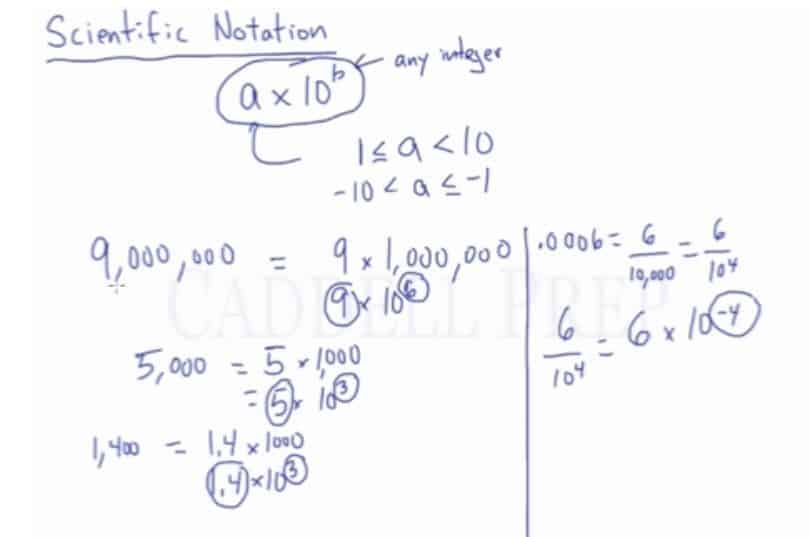Examples of Writing Scientific Notation
Example 1
First, let’s get a number between and
That is
Then, let’s count the decimal spaces to have the value of our exponent
We counted decimal spaces
So we’ll have
Since, we counted from left to right. We have to counteract that by making the value of our exponent negative
Therefore, our final answer is
Example 2
First, let’s get a number between and
That is
Then, let’s count how many decimal spaces are there in for us to get
There are decimal spaces.
Since, we counted from the right to left. Meaning it’s a big number and we’re making it small.
Now, we have:
Video-Lesson Transcript
In this lesson, you will learn how to write numbers in scientific notation. After you finish this lesson, view all of our Pre-Algebra lessons and practice problems.
The basic form of scientific notation is
Whereas can be any integer and can be positive or negative.
Whereas is
Or can also be negative
Whereas is constant.
Here’s an example:
It’s really
Let’s say we have
It’s really
and then
If we have
it could be written as
which really is
See ,
, and
are our
. All of them meet the requirement above.
Likewise, all the exponents are integers.
Here’s an example of a negative exponent.
This is
which is
To review our lesson in Exponents, we have to change the sign to move the denominator to the numerator.
So since we want to move the denominator to the numerator, we have to write
This is a bit tedious work.
Don’t worry. There’s a quicker way to do this!
Writing Scientific Notation by Counting Decimal Places
For example, we have
Let’s get where
then multiplied by
So it’s
Then let’s count the decimal spaces from the right of and stop to get
.
We counted decimal spaces.
This goes right in as our exponent.
So now we have
Let’s have another one.
Remember, we need to have a number that is less than so we can’t have
.
Instead, we can have
So, we’ll have
Then let’s count how many decimal spaces are there in for us to get
There are decimal spaces. This goes right in as our exponent.
We counted from the right to left. Meaning it’s a big number and we’re making it small.
Now, we have
Now, let’s have a small number.
Let’s get a number between and
.
That is
Multiplied by which is constant
Then let’s count the decimal spaces to have the value of our exponent.
We counted decimal spaces.
So we’ll have
But remember we counted from left to right. Which means it’s a small number and we’re making it big number.
We have to counteract that by making the value of our exponent negative.
So our final answer is
Exponent should be in negative if we have a small number and we’re writing it to appear a big number.
On the other hand, an exponent is positive if our original number is big and we’re writing it to become a small number.
Let’s have one more example.
We have
The number between and
is
Our exponent is since we moved three decimal spaces to get
.
Moreover, it should be in negative because we have a small number.
So the scientific notation is
Another way to look at the value of exponent:
If you moved the decimal to the left, you’ll have a positive exponent.
And if you moved the decimal to the right, you’ll have a negative exponent.



